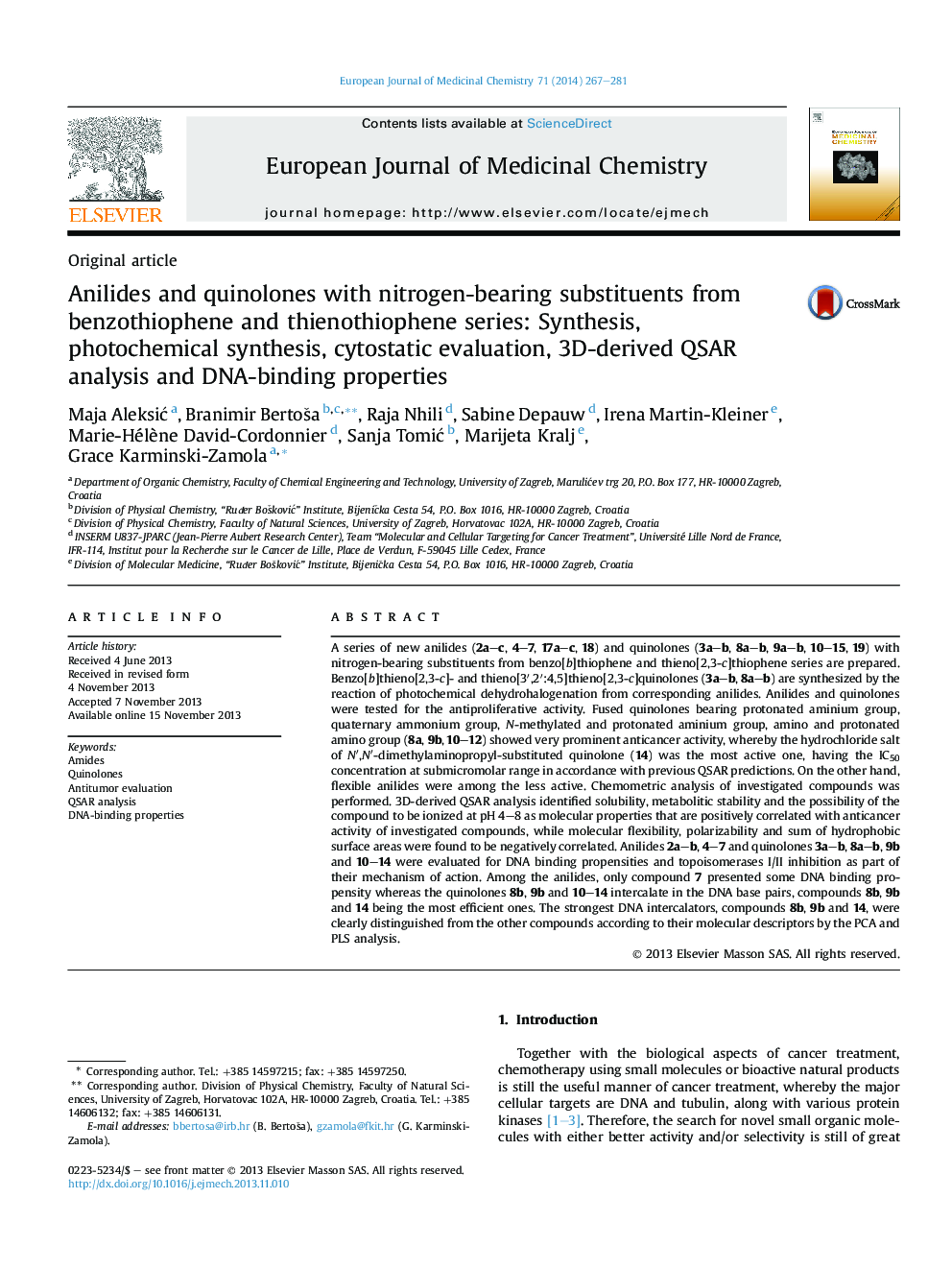| کد مقاله | کد نشریه | سال انتشار | مقاله انگلیسی | نسخه تمام متن |
|---|---|---|---|---|
| 1392598 | 1501145 | 2014 | 15 صفحه PDF | دانلود رایگان |

• New anilides of benzo[b]- and thieno[2,3-c]thiophene series are prepared.
• Corresponding quinolones are photochemically prepared.
• Anilides and quinolones were tested for the antiproliferative activity.
• Anilides and quinolones were evaluated for DNA binding propensities.
• 3D-derived QSAR analysis was performed.
A series of new anilides (2a–c, 4–7, 17a–c, 18) and quinolones (3a–b, 8a–b, 9a–b, 10–15, 19) with nitrogen-bearing substituents from benzo[b]thiophene and thieno[2,3-c]thiophene series are prepared. Benzo[b]thieno[2,3-c]- and thieno[3′,2′:4,5]thieno[2,3-c]quinolones (3a–b, 8a–b) are synthesized by the reaction of photochemical dehydrohalogenation from corresponding anilides. Anilides and quinolones were tested for the antiproliferative activity. Fused quinolones bearing protonated aminium group, quaternary ammonium group, N-methylated and protonated aminium group, amino and protonated amino group (8a, 9b, 10–12) showed very prominent anticancer activity, whereby the hydrochloride salt of N′,N′-dimethylaminopropyl-substituted quinolone (14) was the most active one, having the IC50 concentration at submicromolar range in accordance with previous QSAR predictions. On the other hand, flexible anilides were among the less active. Chemometric analysis of investigated compounds was performed. 3D-derived QSAR analysis identified solubility, metabolitic stability and the possibility of the compound to be ionized at pH 4–8 as molecular properties that are positively correlated with anticancer activity of investigated compounds, while molecular flexibility, polarizability and sum of hydrophobic surface areas were found to be negatively correlated. Anilides 2a–b, 4–7 and quinolones 3a–b, 8a–b, 9b and 10–14 were evaluated for DNA binding propensities and topoisomerases I/II inhibition as part of their mechanism of action. Among the anilides, only compound 7 presented some DNA binding propensity whereas the quinolones 8b, 9b and 10–14 intercalate in the DNA base pairs, compounds 8b, 9b and 14 being the most efficient ones. The strongest DNA intercalators, compounds 8b, 9b and 14, were clearly distinguished from the other compounds according to their molecular descriptors by the PCA and PLS analysis.
Figure optionsDownload as PowerPoint slide
Journal: European Journal of Medicinal Chemistry - Volume 71, 7 January 2014, Pages 267–281